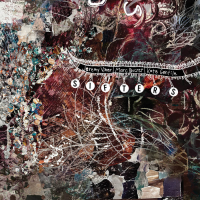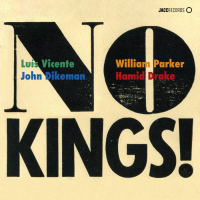Home » Jazz Articles » Album Review » Mark Dresser: Tines of Change
Mark Dresser: Tines of Change
In the first stage of Dresser's solo music, he incorporated unusual fingering and bowing techniques in order to draw an unprecedented variety of timbres and overtones from the instrument. In the second, heard on Unveil (Clean Feed, 2005) and Guts (Kaima, 2010), he worked with luthier and bassist Kent McLagen to add special pickups to capture otherwise inaudible sounds: one embedded in the fingerboard near the nut to amplify the string length above his left hand, another mid-fingerboard to allow him to generate three pitches simultaneously from a single string by "hammering-on" with fingers of both hands, a version of the tapping technique made popular by Eddie Van Halen. In the third and current stage, McLagen and Dresser have added the titular tines to the bass, a set of pitched metal rods like the innards of a toy piano, which can be bowed, plucked, or struck. This gives Dresser four potential simultaneous sound sources: the tines, plus the nut, middle, and bridge pickups, whose levels are controlled with volume pedals.
The tunings of these sources vary: the tines do not produce the even overtones of a string or a column of air and the length of string above the left hand often does not yield a tempered pitch, while the relationships of the pitches generated by activating three segments of a string at once seem daunting to learn. On one hand, Dresser is not engaged in a systematic exploration of microtonality; he is an improviser and these pieces are spontaneous creations, although each starts in a distinctive and likely pre-selected sonic area. On the other, he does like to, as he says, "get nerdy," and has thoroughly studied and practiced his new resources, including finding some favorite licks. In particular, there are certain combinations of intervals which best suit the three-on-one tapping technique.
Dresser has said that the relative unpredictability of these new sounds, compared to established modes of bass playing, introduces the same kind of surprise into solo playing that he gets from working with others. Instead of interacting with a musician with a mind of their own, he is interacting with an instrument even he is unlikely to fully understand or control.
Much of this album sounds like multiple players and listeners unfamiliar with Dresser's work may not recognize many of these sounds as coming from a string bass. The closest comparison may be Fred Frith's Guitar Solos (Caroline 1974), on which he used capos, tapping, and added pickups to similarly amplify multiple segments of a single string. However, Frith also used various objects to prepare and activate his strings and an assortment of effects pedals, while Dresser uses only bows and fingers and no processing.
Unlike Eddie Van Halen, Dresser has not been widely imitated. His students are far from clones and instead continue the tradition of innovation he picked up from his teacher Bertram Turetzky. Aged 70 years, Dresser himself is as curious an artist and as physically intense a player as ever.
Track Listing
Prolotine; Tynalogue; Harmonity; Melodine; Bitonetime; Gregoratyne; Augmentine; Chordone; Nakatanitine; Tonologue; Narratone; Epitine.
Personnel
Mark Dresser
bass, acousticAlbum information
Title: Tines of Change | Year Released: 2023 | Record Label: Pyroclastic Records
Tags
PREVIOUS / NEXT
Support All About Jazz
 All About Jazz has been a pillar of jazz since 1995, championing it as an art form and, more importantly, supporting the musicians who make it. Our enduring commitment has made "AAJ" one of the most culturally important websites of its kind, read by hundreds of thousands of fans, musicians and industry figures every month.
All About Jazz has been a pillar of jazz since 1995, championing it as an art form and, more importantly, supporting the musicians who make it. Our enduring commitment has made "AAJ" one of the most culturally important websites of its kind, read by hundreds of thousands of fans, musicians and industry figures every month.




















